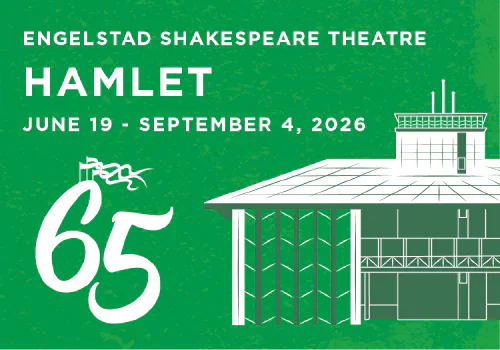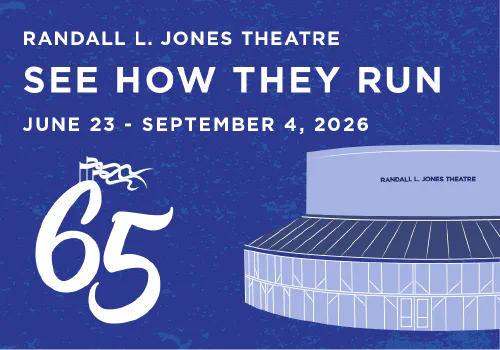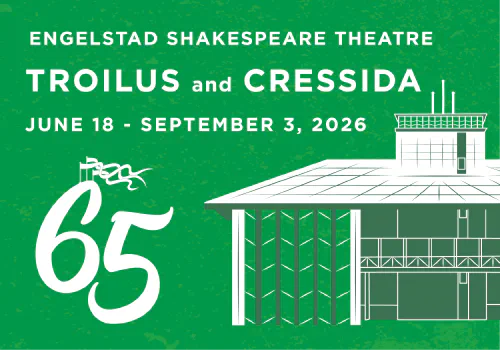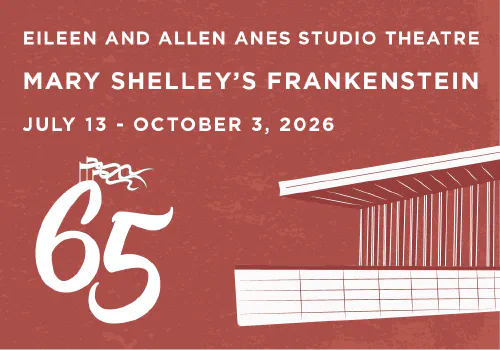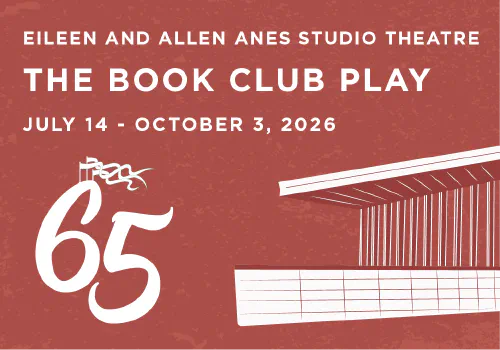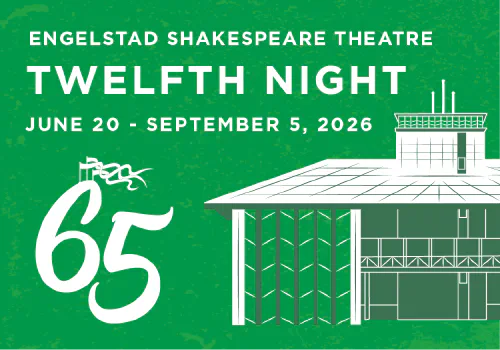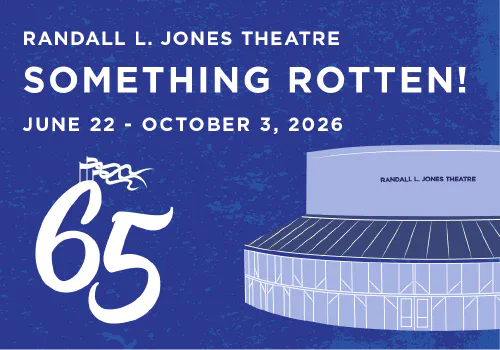By Daniel Frezza
Mixing old and new generates a potent appeal. The ancient Greeks adapted existing stories for the stage, and the practice happily continues: Patrick Barlow’s comedy Alfred Hitchcock’s The 39 Steps is adapted from an earlier stage version by Simon Corble and Nobby Dimon of Hitchcock’s 1935 film based on John Buchan’s 1915 novel The Thirty-Nine Steps. Successful adaptation entails knowing what to change and what to keep — choices shaped by the adaptor’s style and understanding of audience tastes. Let’s look at the process.
Buchan’s novel is set in the summer of 1914. The hero, Richard Hannay, attempts to foil a German plan to assassinate a prominent statesman visiting England, thus drawing the country into war. Buchan called his novel a “shocker” (or “thriller” in modern parlance). The term isn’t entirely apt because Buchan intentionally underplays the suspense: by Hannay’s light tone in recounting his adventures; by his confidence that he can outwit the villains while eluding the police who suspect him of murder; and by his trust that, when needed, sympathetic people will turn up to help him. Buchan keeps the assassination and impending war in the background, focusing on Hannay’s convoluted moves to avoid capture and death. The German spies are introduced only midway through the story and aren’t fully developed characters. In the final chapter, when most authors would ratchet up the tension and pace, Buchan exchanges swift action for a psychological game. Hannay confronts his suspects, but they protest their innocence so convincingly that for once his confidence wavers: are they the real villains? Hoping they’ll slip up if given time, he plays bridge with them. Only two pages from the end is Hannay certain he has the right men, and the action swiftly winds up (The Thirty-Nine Steps [London, Penguin Books, 2004]). It’s a fast-moving chase story (innocent-man-on-the-run variety) without subplot or romance.
Alfred Hitchcock believed the chase was natural material for movies “because the basic film shape is continuous. Once a movie starts it goes right on” (Sidney Gottlieb, Ed. Hitchcock on Hitchcock [Berkeley, University of California Press, 1995], 125). Hitchcock defined the chase as “someone running toward a goal, often with the antiphonal motion of someone fleeing a pursuer.” The fox hunt is an example; common variations are boy-chases-girl, police-chase-criminal, hero-chases-villain. Buchan’s novel uses the last two, plus villain-chases-hero.
Hitchcock kept Buchan’s title (it had strong name recognition), general plot, pacing, tone and timeliness — updating it to the mid-1930s (a change in detail that actually retains something important). Often Hitchcock expanded on passing incidents in the novel. Buchan introduced a spy with a photographic memory but didn’t develop it; Hitchcock made a man with a phenomenal memory a central character.
Buchan fleetingly mentioned Hannay’s visit to a music hall; Hitchcock set his opening scene and the climactic final scene in a music hall. In Buchan, “the 39 steps” are stairs leading to the spies’ location; in Hitchcock, it’s the spy ring’s code name. The book has no major female character, which wouldn’t do for the movies, so Hitchcock added “boy-chases-girl” and the dynamics of the new Hollywood genre, screwball comedy, with its adversarial male-female relationship and sparring dialogue (John Orr, Hitchcock and 20th Century Cinema [London, Wallflower Press, 2005], 66).
Censorship caused another change. In 1935 relations between England and Germany, though tense, were officially friendly. To avoid further straining relations, the British Board of Film Censors rejected scripts critical of Germany (James C. Robertson, The Hidden Cinema: British Film Censorship in Action, 1913-1972 [London, Routledge, 1989], 75). So Hitchcock’s film contains no references to Germans.
Cut to 1996 when playwrights Simon Corble and Nobby Dimon created a stage version of the Buchan/Hitchcock tale. In the intervening sixty years, playwrights forged new ways of telling stories.
Simpler sets and small casts became common and, especially in the 1990s, epic narratives were attempted with small forces. Corble describes their play thus: “The action takes place in a London flat in the year 1935. . . . A team of decorators relieve their boredom by acting out an adventure using only their ladders and planks to suggest the sets needed. The action of the decorators in changing the ladders or in creating the sound effects with their tools, is at least half of the show” (http://www.corble.co.uk/page_ 1212501185000.html). Their show debuted in May 1996 in Richmond, using four actors, four stepladders, some planks and a drop-cloth (Andrew Johnson, “Thirty-nine steps to an unlikely theatrical triumph,” The Independent, 15 June 2008). The play had numerous successful regional tours throughout Great Britain — demonstrating the maxim, attributed to Renaissance playwright Lope De Vega, that all one needs for theatre are two trestles, some boards and a passion.
In 2002 producer Edward Snape bought the rights to the script. Patrick Barlow, co-founder of the National Theatre of Brent, known for its successful small-scale productions of epic tales, was invited to play Hannay. In 2004 Barlow rewrote the script, keeping the staging and four actors but basing it more on the film than the book. After a successful national tour, it transferred to London in 2006, where it was a hit and won the Olivier Award for Best New Comedy in 2007. It opened to rave reviews on Broadway in January 2008 and ran until January 2010. It continues in its third year in London.
Both plays retain the film’s 1930s period—thus effecting an important change: the story is no longer contemporary, though the presentation style is. Modernism, which held sway for much of the twentieth century, repudiates the past, whereas “postmodernism gaily embraces it, quotes it, and even recycles it. A postmodernist work of art, therefore, is not about ‘something’ so much as it is about itself ” (Robert Cohen, Theatre. 6th edition [Boston, McGraw Hill, 2003], 304). The result is a stylized simulation of a reality (the story of a popular film and book) that comments on the simulation. The staging highlights the theatricality of the means of story telling, emphasizing to the audience that they are watching a performance, and recapturing some of the fantasy of children’s play. “In an age when reality tends to disappoint, we are looking for more than reality in the theater” (Cohen, 279). And especially in hard times, we are looking for fun.
Barlow follows the film fairly closely but introduces his own changes. The spies are German again; one attempts to recruit Hannay. Hitchcock developed an insignificant moment in the book into a tense comic-serious scene where Hannay must improvise a speech at a rally, winding up with a stirring close. Barlow adds a foreshadowing of the speech’s theme and extends the speech, making it a moving appeal for caring and human decency. He includes Buchan’s airplane chase. (Hitchcock didn’t use that idea till North by Northwest in 1959.) He adds an opening scene to establish the staging approach and introduce the two actors who will play multiple roles, plus a sweetly sentimental final scene for the hero and heroine. But the chases, staging, and humor are the main things. Hitchcock added a lot of comedy, and Barlow adds more (Patrick Barlow, The Thirty-Nine Steps [New York, Samuel French, 2009]). Carol Middleton, reviewing the 2008 Melbourne production, saw the play “not as a satire of the original, but an extension of it, mining the comic element” (http://www.australianstage.com.au/reviews/melbourne/the-39-steps--melbourne-theatre-company-1349.html). It reminds me of Liszt’s opera paraphrases: the goal is to present the well-known tunes and simultaneously to display dazzling virtuosity. And to get laughs. Barlow, that is, not Liszt.
(Enter a man wearing the mask of Tragedy chased by a man wearing the mask of Comedy and wielding a rubber chicken. Tragedy slips on a banana peel and skids offstage. Comedy turns to the Author.)
COMEDY: This is too high-brow! “Lope de Vega?” “Postmodernism?” “Liszt!” Don’t you get it?
AUTHOR: You’re right. I think I do get it, though. Like millions of us, Barlow got hooked on “Monty Python’s Flying Circus.” And he can actually write that brand of wacky humor. So if you love Monty Python (and who doesn’t?), come see this show and laugh your head off. (Comedy swats the Author with the rubber chicken. A sixteen-ton weight falls on them.)



